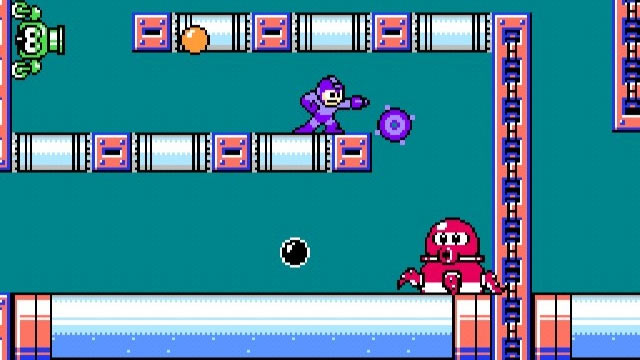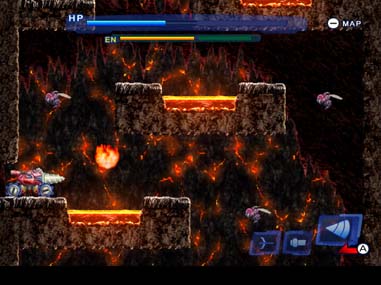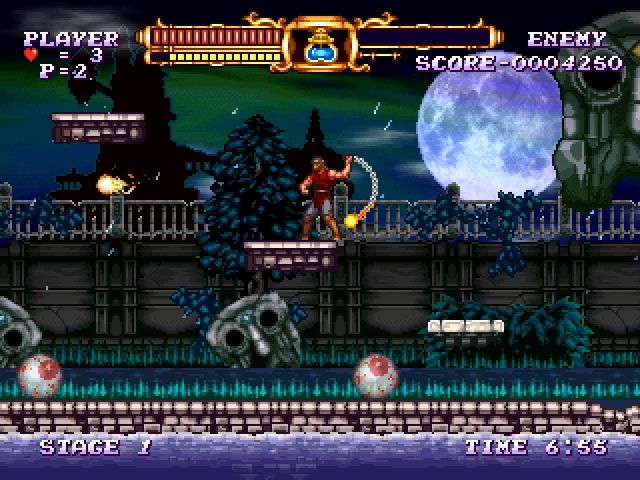
In the world of video games, there is no shortage of franchises with multiple sequels; they tend to be the rule rather than the exception. With the latest generation of consoles, several publishers are taking advantage of digital distribution to revisit classic franchises in the form in which they originally appeared. For a lot of ancient game characters, this retro revival has been a way to reinvigorate interest in their respective series.
MEGA MAN
Games: Mega Man 9, Mega Man 10
Mega Man came back in a big way thanks to the back-to-basics approach of Mega Man 9. The original series hadn’t been revisited since the late 1990’s, but the graphically-advanced seventh and eighth games, as well as Mega Man and Bassshowed that something about the platforming didn’t feel quite as right in 16- or 32-bit — strange since the X series had already shown how to do it. The 8-bit retro Mega Man 9 came as a shock to series loyalists, but undoubtedly had an appeal, and thanks to a big push by Capcom, including pseudo-old-school cover art, it became a success.
So much of a success that it became the first digital game to get a sequel of its own. Mega Man 10revisits the concept, but even seems authentically 8-bit in its minor tweaks and differences from its predecessor, while still retaining the feel of the classic games. It even features the first 8-bit appearance of Bass, who is playable via downloadable content. These games actually feel like new NES games, which is an achievement all on its own. Without digital distribution, it’s highly likely the original Mega Man series might never have seen another installment.
BLASTER MASTER
Game: Blaster Master: Overdrive
 Unlike the WiiWare Mega Man games, which are retro-styled but wholly new creations, Blaster Master: Overdrive is a remake of the original. Called Super Planetary War Records: Metafight in Japan, for its American release the title was simplified and the story made to revolve around the love of a boy for his pet frog, who then leaps into a radioactive pit and becomes a mutant. Naturally, the boy jumps in right after and picks up a gun and mobile super car which just happens to be there, just as so many weaponized vehicles were secretly buried underground in the 80’s in case of Soviet attack.
Unlike the WiiWare Mega Man games, which are retro-styled but wholly new creations, Blaster Master: Overdrive is a remake of the original. Called Super Planetary War Records: Metafight in Japan, for its American release the title was simplified and the story made to revolve around the love of a boy for his pet frog, who then leaps into a radioactive pit and becomes a mutant. Naturally, the boy jumps in right after and picks up a gun and mobile super car which just happens to be there, just as so many weaponized vehicles were secretly buried underground in the 80’s in case of Soviet attack.
While Overdrive improved on many of the original’s flaws, it did suffer from a somewhat poor choice of controls, limited to only the Wii Remote itself held sideways, mapping certain functions in awkward places. That being said, it did provide a new entry for a series that had been unvisited for over a decade, and a revival of interest for Sunsoft as a video game publisher.
CASTLEVANIA
Game: Castlevania: The Adventure ReBirth
While Blaster Master: Overdrive was a remake of the original Blaster Master, Castlevania: the Adventure ReBirth is a re-imagined version of a lesser known entry in the series, 1989’s Castlevania: The Adventure. The levels are largely revamped, new areas and hidden paths have been added, and the rope-climbing mechanic was replaced with the more traditional stairs.
Eschewing the exploration-based gameplay of more recent handheld Castlevanias, this downloadable title is strictly old-school: Stage-based levels with a clear goal, then moving onto the next stage until Drac himself is reached. Castlevania: The Adventure ReBirth feels exactly like a 16-bit version of the monochromatic Game Boy original would, complete with flame-throwing whip, although that power is more limited in this remake.
Again, a new stage-based Castlevania game is not one that likely could have been released without the aid of digital distribution. The recent entries in the series have all been the non-linear, “Metroidvania” games, while most console games have strayed to 3D, whether successful or no, so ReBirth is definitely a somewhat fresh, if retro, look on the series.
In overview, cheaper, easier distribution and shorter development cycles have resulted in this back-to-pixels movement, and the success from experienced gamers looking to revisit their glory days, as well as curious newbies looking to try something different, means that it’s likely to continue. What old games will be revisited next? We’ve already got a newAdventure Island and Bonk’s Adventure on the way — maybe a sequel to Princess Tomato In the Salad Kingdom? Or a new Adventures of Lolo? With the huge back catalog most developers have, nearly anything is possible.




 ShareThis
ShareThis








I want a sequel to m.c. kids